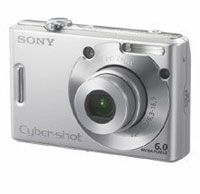In this day and age, it may seem a cumbersome to connect something, such as a camera, to your computer to transfer information. WiFi cameras, which first made an appearance in 2005, are aimed at solving cable clutter by making it possible to transfer photos wirelessly from a digital camera to a Web site or your computer. This means you can do things like e-mail photos of your trip while you're still on vacation, or get pictures directly off your camera and to an editor quickly if you're a photojournalist.
As with non-WiFi cameras, your choice of camera will be dependent on how you plan to use it. WiFi-enabled point-and-shoot cameras retail for a little bit more than their plug-and-play counterparts, from about $200 on up. As of early 2010, no WiFi SLR cameras were available; however, by using a WiFi-enabled SD card called an Eye-fi, many cameras can gain this capability for $50 and up [source: Eye-Fi]. These SD cards have a WiFi antennae built into them, which allows them to offer basically the same functions as a camera with built-in WiFi, but they lack the on-screen interface if a camera doesn't directly support it. With the Eye-Fi, you set up the card on your computer, then place it in the camera, where it automatically uploads photos to your computer or Web space anytime it detects a compatible WiFi network.
Advertisement
The difference between WiFi cameras and Eye-Fi cards is straightforward: WiFi cameras are already built to use WiFi functions out of the box, whereas Eye-Fi cards are an extra memory card. Both require a brief setup process and offer the same basic functionality.
If you're worried the simplicity of having a WiFi camera comes at the cost of image quality, your concerns are well directed. Certain models, especially early ones, may upload files at lower resolutions than what is stored on the camera. The high-quality shots remain on the camera, so they can still be transferred through a wired connection when you have the chance. You won't have that problem with most newer models, though.
So, once you've got your WiFi-enabled camera in your hands, you'll need to set up basic features, automatic functions and the Web site or computer to which you plan to upload your pictures. Read on to find out how in the next section.
Advertisement


